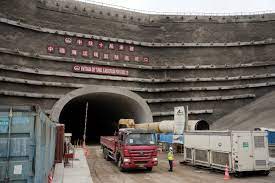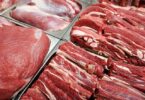CHANCAY (Reuters): In September, a group of Brazilian farmers and officials arrived in the Peruvian fishing town of Chancay. The draw: a new Chinese mega port rising on the Pacific coast, promising to turbo charge South America’s trade ties with China.
The $3.5 billion deep water port, set to start operations late this year, will provide China with a direct gateway to the resource-rich region. Over the last ten years, Beijing has unseated the United States as the largest trade partner for South America, devouring its soy, corn and copper.
Beijing and Lima hope Chancay will become a regional hub, both for copper exports from the Andean nation as well as soy from western Brazil, which currently travels through the Panama Canal or skirts the Atlantic before steaming to China.
“The Chancay mega port aims to turn Peru into a strategic commercial and port hub between South America and Asia,” Peru’s trade minister Juan Mathews Salazar told Reuters.
Part of China’s decade-old ‘Belt and Road’ drive, the new port embodies the challenge facing the United States and Europe as they look to counter Beijing’s rising influence in Latin America. China’s trade muscle has helped it win allies and gain leverage in political forums, finance and technology.
Full construction started in 2018 at Chancay, some 80 kilometers (50 miles) north of Lima. Workers are now laying thousands of piles and breakwaters; work signs are written in white-on-red Chinese characters.
The first phase of Chancay is set be completed in November 2024. Chinese President Xi Jinping, expected in Peru for an Asia-Pacific Economic Cooperation (APEC) summit that month, could inaugurate the port, a diplomatic source in Lima said.
China’s embassy in Lima did not respond to Reuters queries.
“It’s part of China’s new Silk Road,” said Mario de las Casas, corporate affairs manager for Cosco Shipping, which holds a 60% stake in the port. The remainder is controlled by local miner Volcan, in which Glencore (GLEN.L), opens new tab owns a stake.
Jose Adriano da Silva, a farming entrepreneur from Brazil’s western Acre state who visited the port, said the project would accelerate regional development. He said talks between Peruvian and Brazilian officials were underway to resolve overland transport challenges.
Peru’s government is planning an exclusive economic zone near the port and Cosco wants to build an industrial hub near Chancay to process raw materials that could include grains and meat from Brazil before shipping them to Asia.
Brazil’s ambassador in Peru, Clemente Baena Soares, said there were plans for meetings between officials early this year to seek to resolve logistical, sanitary and bureaucratic hurdles at the border so Brazilian trucks can more easily reach the port.
“It’s an opportunity for grain and meat production – especially from Rondonia, Acre, Mato Grosso and Amazonas – to go to Asia through the port of Chancay,” said Soares, who also visited Chancay in September, naming four states in western Brazil.
“(Brazilian businesses) are delighted with the possibility of not using the Panama Canal to take their goods to Asia.”
He added there would need to be investment in an existing road known as the Interoceanic Highway – which runs from further south in Peru across the Andes to Brazil – to improve transport routes. A long-discussed rail link remained in the study phase, he said.







